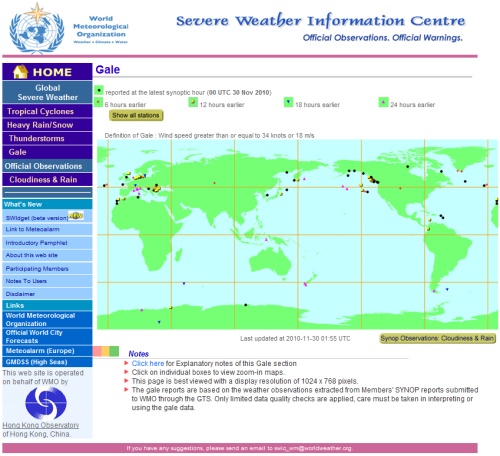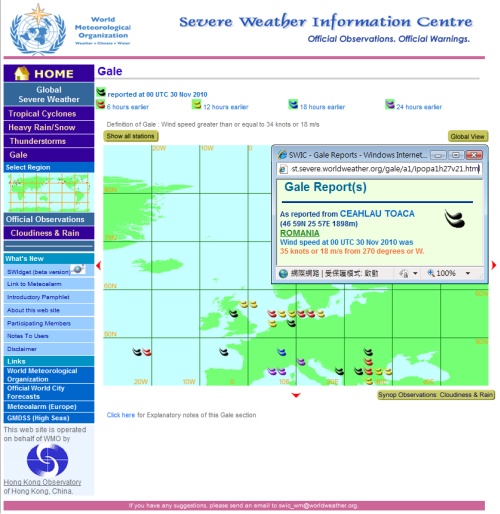Severe Weather Information Centre adds worldwide gale reports
28 December 2010
|
The World Meteorological Organization (WMO) Severe Weather Information Centre (SWIC), developed and operated by the Hong Kong Observatory (HKO), launched today (28 December) a new service to provide official wind information with gale force or above reported all over the world. The information will help users around the globe to be aware of the latest high wind areas and conditions so as to take necessary precautionary measures.
Winds with gale force or above (speed greater than or equal to 34 knots or 18 m/s) may interrupt various operations, or cause damages and even loss of lives. Users can now readily access the global gale information via the newly added gale webpage (http://severe.worldweather.wmo.int/gale) in SWIC. The gale webpage displays the locations of occurrence of gales or above in the past 24 hours based on the synoptic reports from land stations and ships of WMO members. When the user moves the cursor to a gale location on the map, detailed information including the position (latitude, longitude and altitude of land stations), the observed wind speed and wind direction will be shown. The hyperlink of the official website of WMO member providing the report will also be displayed for reference. SWIC is a WMO website that integrates and enhances regional activities within an international framework to reduce loss of life and damages due to severe weather. The website provides official tropical cyclone information and observation data of severe weather. Apart from the gale information, heavy rain and thunderstorms data around the world are also available from the website at http://severe.worldweather.wmo.int/.
|

